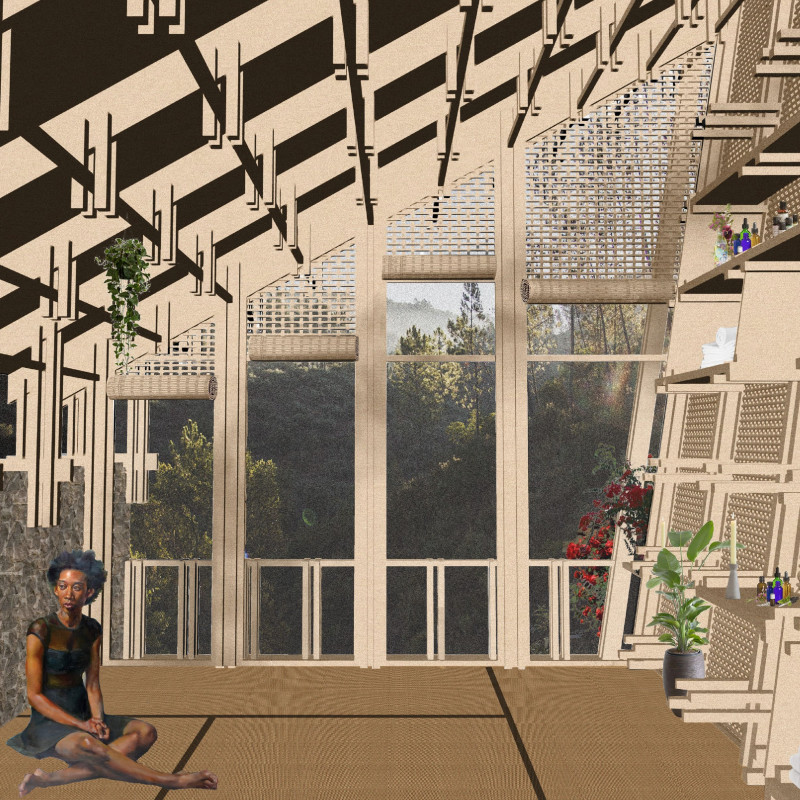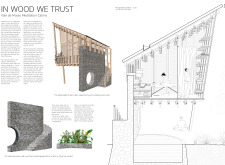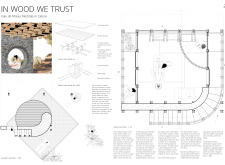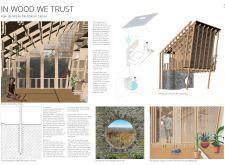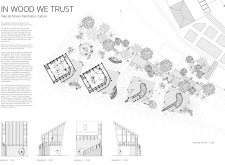5 key facts about this project
The Vale de Moses Meditation Cabins are located in the Serra da Estrela mountains in Portugal, designed as spaces for reflection and mindfulness. This architectural project emphasizes harmony with the natural landscape, featuring structures that promote a meditative experience while utilizing sustainable materials and practices. The fundamental design concept revolves around creating environments conducive to introspection within the breathtaking scenery of the Vale de Moses.
The cabins serve multiple functions, including spaces for meditation, yoga, and relaxation. Each cabin is oriented to maximize natural light and views of the surrounding nature, enhancing the connection between the interior and exterior. This careful alignment respects both privacy and serenity, essential for a mindfulness retreat.
Unique Architectural Approaches
A key feature of the design is the integration of curved stone walls. These walls give each cabin a defined character while ensuring durability and thermal insulation. Constructed from locally sourced stone, the walls not only contribute to environmental sustainability but also help the cabins blend seamlessly into their surroundings.
Lightweight timber serves as the structural framework, allowing for easy assembly and adaptability to the site. The use of untreated timber creates a warm, inviting atmosphere, further enhancing the calming effect crucial for meditation spaces. The cabins employ extensive glazing for windows and doors, providing uninterrupted views of the landscape and allowing for natural ventilation.
Sustainable Water Management Systems
The project integrates an effective rainwater harvesting system, collecting rainwater for use within the cabins. This approach minimizes reliance on external water sources and aligns with the eco-friendly ethos of the retreat. Solar panels are also integrated into the monolithic roofs, promoting energy self-sufficiency without compromising the architectural integrity of the structures.
Interior spaces are designed to be flexible, allowing users to configure areas based on individual needs. The thoughtful use of natural materials such as straw mats for flooring and local stone for seating further enhances the grounding environment of the cabins.
For a more comprehensive understanding of the Vale de Moses Meditation Cabins, readers are encouraged to explore the architectural plans, sections, and designs that illustrate the project's thoughtful approach to architecture and environmental integration. Delving into the architectural ideas presented will provide deeper insights into how this project exemplifies a modern mindfulness retreat.


